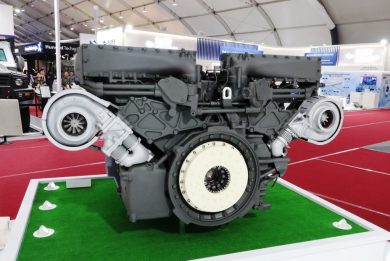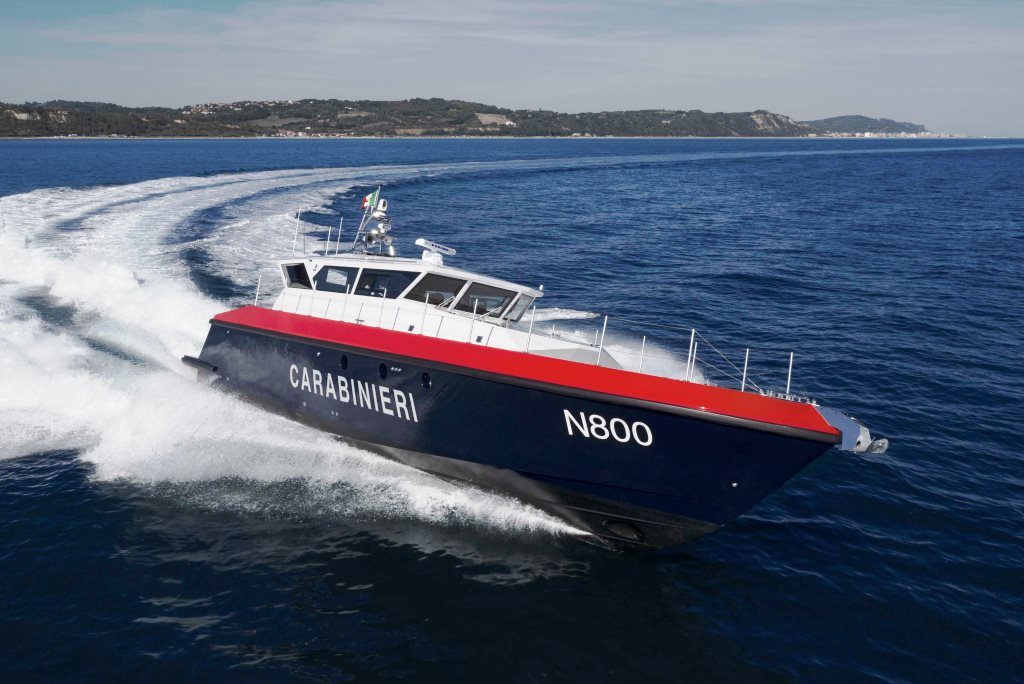
N800: the new Carabinieri Fast Patrol Vessel by FSD
Let’s first say that after some months of virtual reporting, putting again “hands on” a new product felt like deliverance. Back to work!
The opportunity was to sea trial the latest product of Ferretti Security and Defence (FSD); “like the previous FSD 195, which was based on the Pershing 64 hull, the new FSD N800 HY is based on the 22° deadrise hull of the Itama 50 sport/pleasure yacht, Itama being also part of the Ferretti Group,” Andrea Ameli, the FSD Technical Director who developed the project, told EDR On-Line.
In the FSD 195 the whole hull design was kept, albeit deeply revised in terms of structure and materials, to considerably reduce weight while increasing rigidity, in order to increase speed, while in the case of the new N800 only the shape of the submerged part of the hull was kept, the whole topside boat being redesigned from scratch.
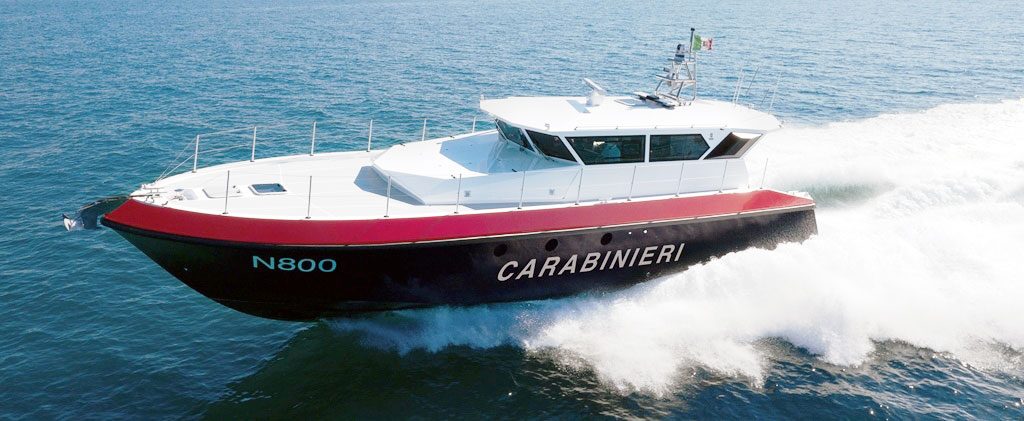
Here too the materials adopted are a mix of glass-fibre and carbon, although the solutions are less extreme compared to the FSD 195. The N800 was designed taking into consideration the requirements expressed by the Carabinieri, the Italian police corps with military status that although depending from the Ministry of Defence operates mostly under the Ministry of Interior.
While the FSD 195 aimed at a 50+ knots speed, requirements for the N800 were less stringent, required speed being 30.5 knots, which led to the choice of a different propulsion system with an option for hybrid diesel-electric propulsion.
The N800, which will replace the Class 800 patrol boats in service, is build according to RiNaMil Fast Patrol Vessels Rules, Military Police notation, and can withstand Sea State 4.
The N800 ship are 16.75 meters long, 13.85 meters at water line, with a 4.65 meters beam and a 1.57 meters draft, empty displacement being 21.7 tonnes while full load displacement is 25.5 tonnes. They are powered by two MAN i6 diesel engines providing 800 hp each at 2,300 rpm, fitted with a V-drive reduction gears, moving two 65 mm diameter shaft and two four-blade fixed pitch 765 mm diameter propellers; an electric-powered bow-thruster is fitted for harbour manoeuvres.
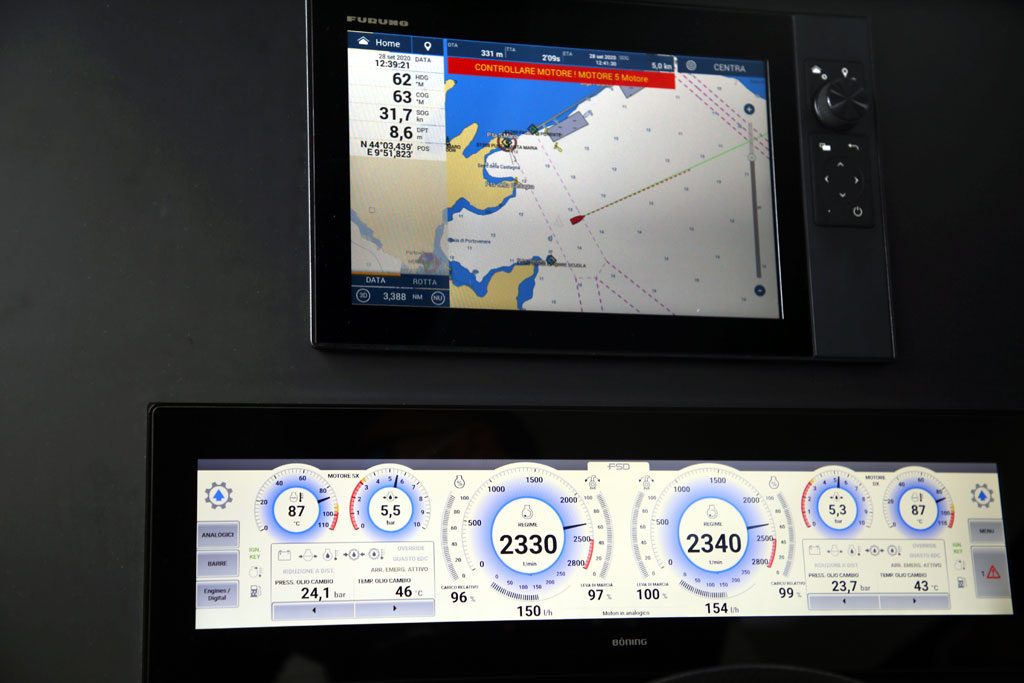
After the pre-heating that brought the engines temperature around 75° C, the N801 Ciriaco Carrù leaves the harbour sailing at slow speed through the La Spezia inner gulf; clearing the breakwater the captain smoothly accelerates the ship reaching 31.7 knots under a darkening sky, a storm quickly approaching the test area.
The N800 starts planing at 12-14 knots, exploiting the manual flaps, the fuel consumption indicator showing an 8 litres per hour consumption at 8 knots which increases to 150 litres per hour at maximum speed; the ship hosts two steel fuel tanks, for a total of 2,700 litres, range at maximum speed being over 240 NM, which increase to over 300 NM at 22 knots cruise speed.
All data related to speed, course, engine status, fuel consumption and so on were clearly shown on the Navnet TZT3 12.1-inch screen available to the pilot, who seats on the front-left shock absorbing seat provided by Shoxs of Canada, Furuno providing all the electronic and sensors suite and integrating the FLIR gimballed optronic sensor.
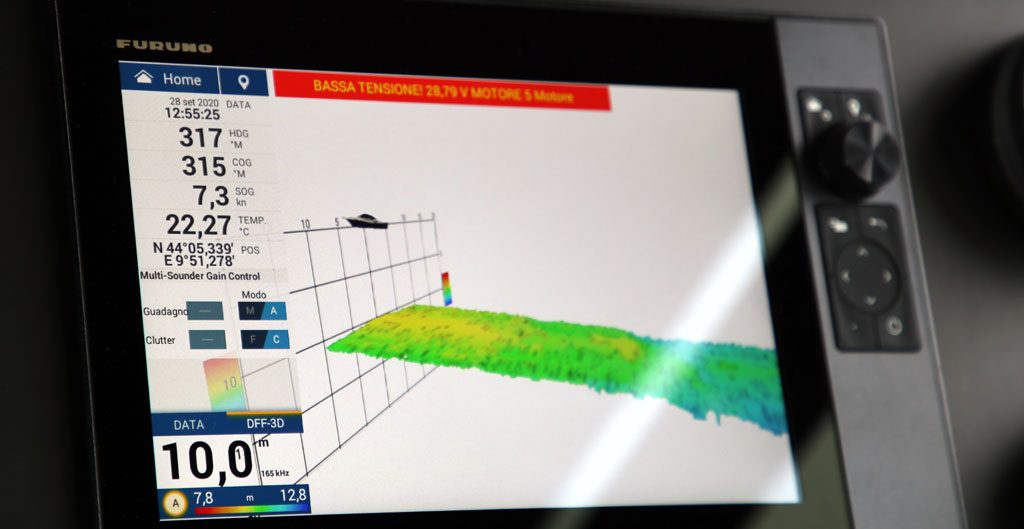
On the right side of the ship we find the navigator/communications officer position, which features an identical layout minus the engine throttles; a display identical to that of the pilot shows a wholly different picture, the various modes being selected by the operator, the one seen during the test being that displaying the sea bottom provided by the DFF-3D multibeam network sonar (a navigational echo sounder being also fitted), the operator being also able to select the surface picture obtained from the DRS 6A NXT broadband radar fitted with fast target tracking and auto target acquire functions.
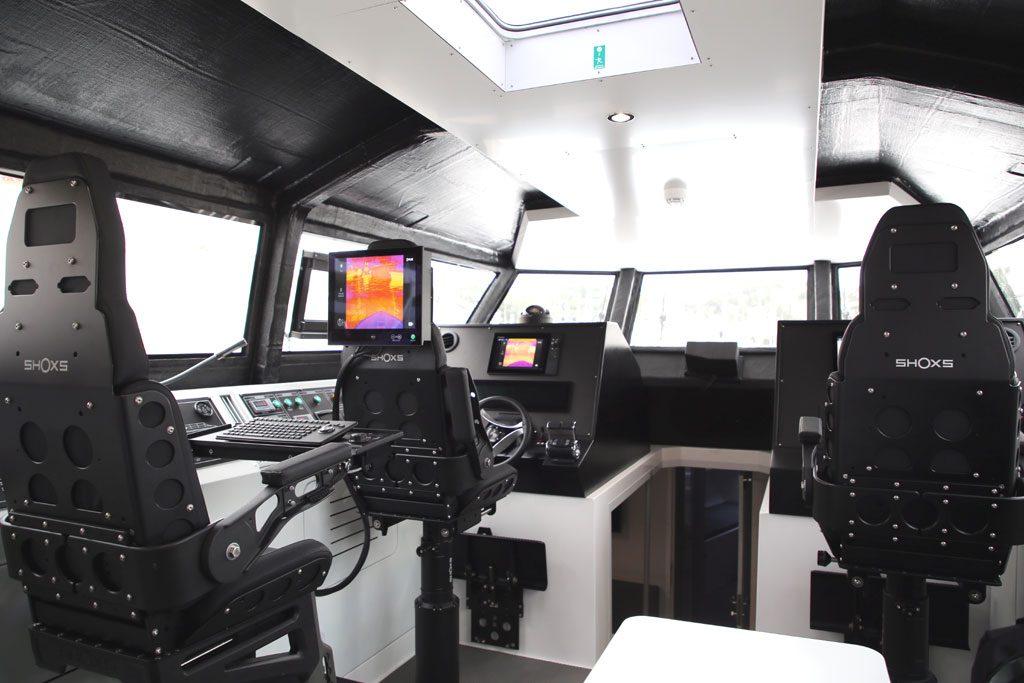
Under the screen one slot was still void, the ship awaiting delivery to be fitted with the so-called Gamma 400 crypto radio operating in the 400 MHz band. Behind the pilot we find the commander’s position, which is fitted with a keyboard and a ball mouse allowing to operate the FLIR M364C gimbal fitted with a high definition low level CMOS camera with x30 zoom and an uncooled thermal imaging sensors, the system allowing image fusion, the picture being shown on a 15-inch display.
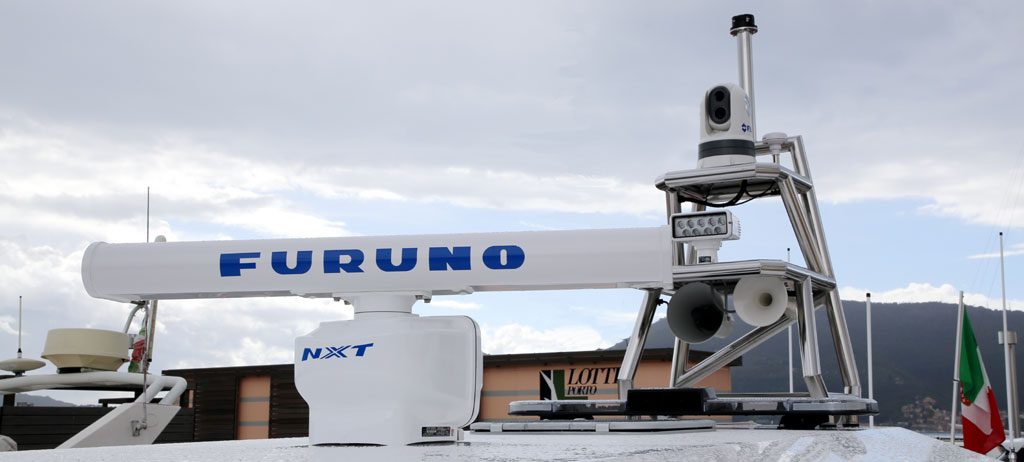
After reaching the maximum speed, the FSD captain performed a series of turns, port and starboard, to demonstrate the ship agility; the pretty calm sea allowed to manoeuvre at high speed without any problem, BCS hydraulics easily steering the two TS rudders.
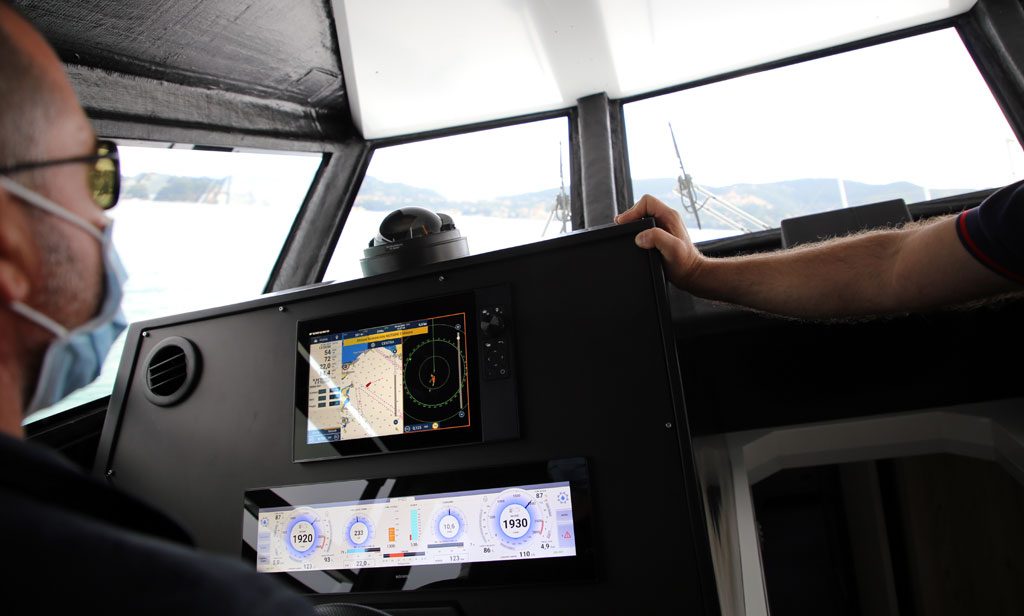
A said, the N800 is powered by two MAN diesels, which are located astern, the engine room being easily accessible through two dedicated hatches; after having properly ventilated the room it was possible to observe the power plant, which shows a couple of flanges between the diesel engine and the ZF drive. These will be used to insert a three-phase permament magnet electric motor, the second ship of the N800 class, currently under construction, being developed with a hybrid propulsion system. The insertion of the 75 kW motors, other than the propulsion line lay-out will bring to a complete redesign of the electric and cooling plants: The latter will maintain air cooling for thermal engines, while electric ones will be water cooled, the direct cooling being provided by a fresh water system, which will be cooled by a seawater system through a heat exchanger. Electric motors will be used for sailing at low speed in a non-polluting mode, i.e. to carry out law enforcement operations in marine protected areas with minimal impact, and/or to provide boost to accelerate the ship when required. The requirement in the electric propulsion mode is for one hour endurance at 7 knots, each motor having a 288 V 100 Ah lithium iron phosphate battery group.
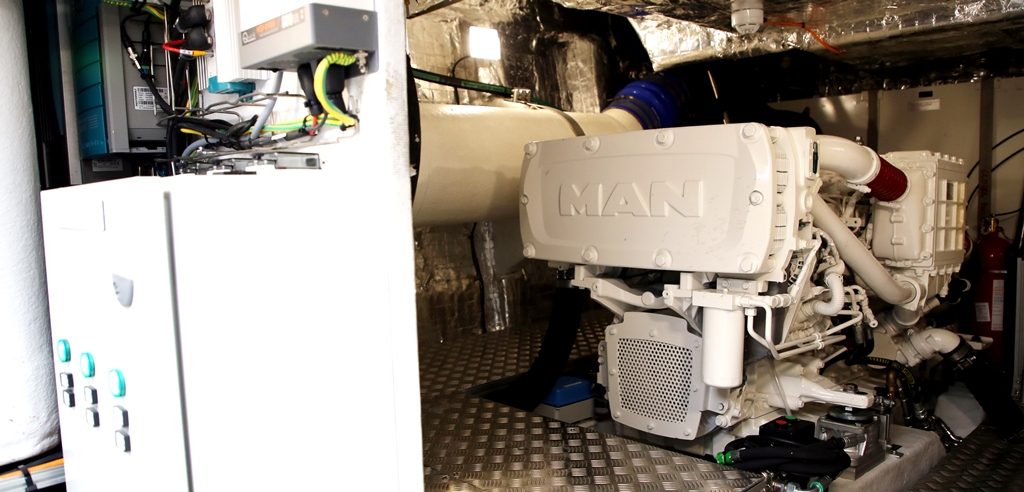
When not in use the two motors will be exploited to reload batteries. The hybrid version will see two add-on displays on the pilot’s console, one right and one left of the main screen, to provide information on electric motors and battery status, a different set of engine throttles integrating electric motors controls replacing standard ones.
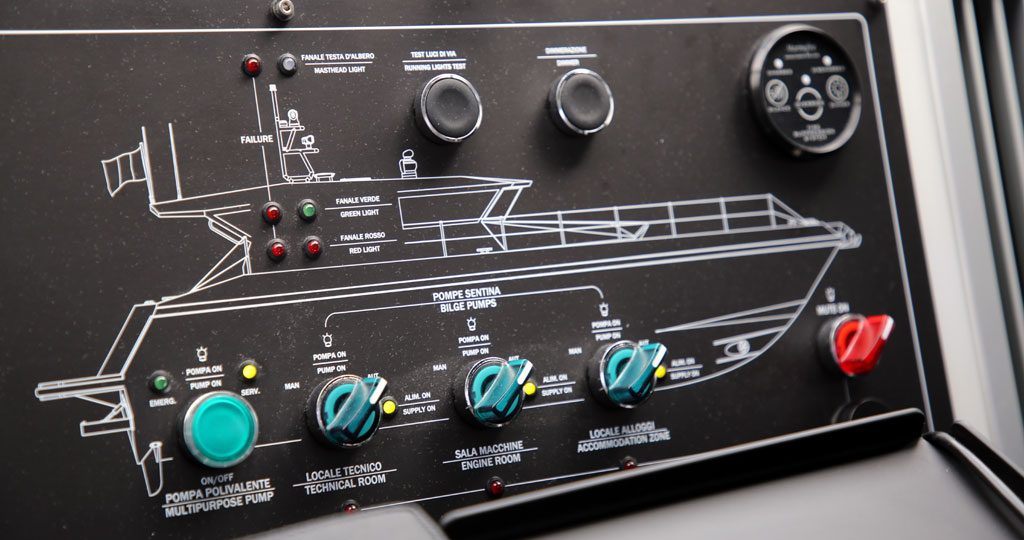
Currently the contract for the Carabinieri is for 16 ships, the second to be fitted with hybrid propulsion; how many will be provided in this version is still open to question, although green requirements are becoming a top priority thus it is possible that the Carabinieri HQ will try to get all the N800 in hybrid configuration.
The layout allows eventually an upgrade at a later date, although this will encompass a considerable work on electric and cooling plants, as previously mentioned.
The standard version is fitted with five battery groups, one for each engine, one for on-board services, one for radio comms, and finally an emergency one fitted astern, outside the cockpit, all being based on lead batteries, a 10 kW genset ensuring their reloading.
Compared to current Carabinieri 800 series patrol boats the new N800 features a much better comfort, starting from the quietness of the cabins even at maximum speed, the engine room sound insulation being pretty effective.
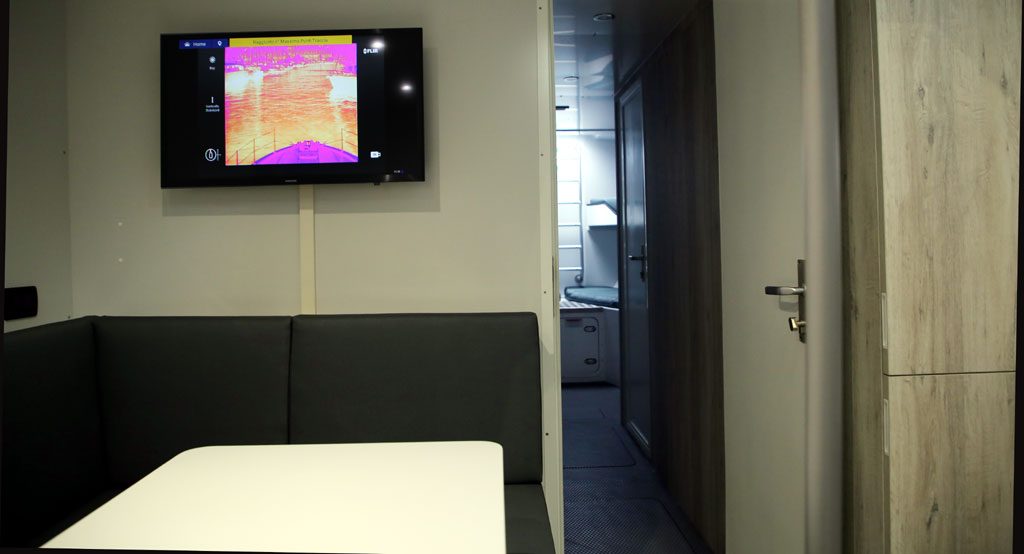
Behind the navigator/comms officer we find a four seat office desk with a table that can be easily lowered to host the stretcher available on board, the access door to the cabin being designed to allow easy passage to it. A short stair located aft of the pilot and navigator’s positions allows to access the living quarters; on the right we find the galley, with a table and seating on the opposite side, a 32-inch TV screen showing the image available on the commander’s display on the bridge. A short aisle takes into the crew berthing, with four bunks available, while on the right we find a two-bunk cabin for the captain and a possible host, and on the left the lavatory, with electric toilet and shower. A centralised air conditioning system, allowing selecting the preferred temperature in each room, is fitted. The minimum crew is made of three Carabinieri, the ship being designed for missions lasting up to two-three days; a reinforced crew of six can be easily hosted, the N800 being also capable to accept 12 extra passengers. The N800 is equipped with a stretcher, the door giving access to the cockpit being designed to allow its passage, while the table in the cockpit area can be lowered in order to fix the stretcher on the area, providing the ship with CASEVAC capability.
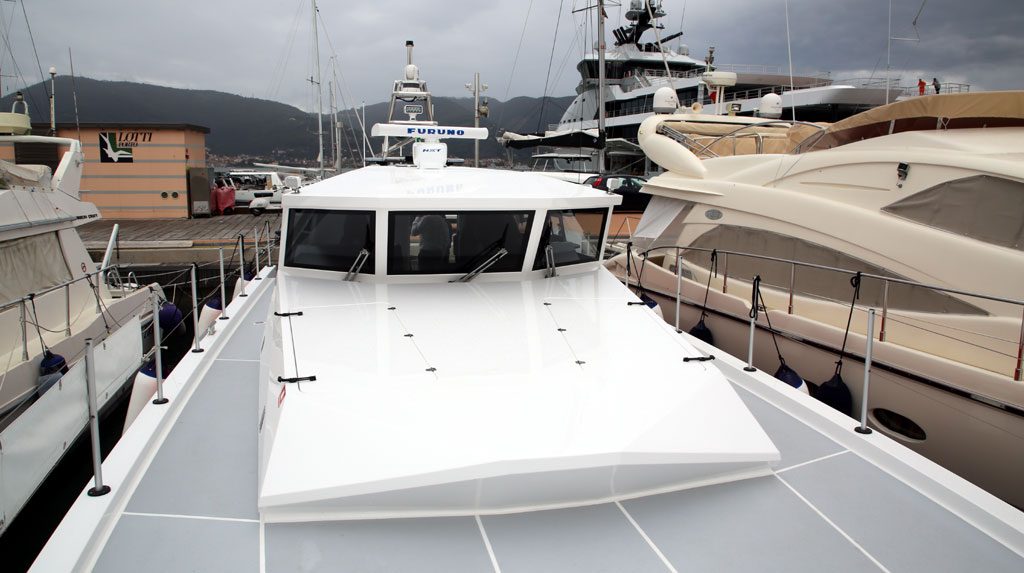
A removable superstructure was added ahead of the bridge, which hosts two inflatable rafts as well as a powerful diesel-pump, which can be used as a bilge pump in case of emergency or to pump water in the fire hoses should a fire hit the ship itself or to extinguish a fire on another vessel.
Aft of the cabin we find, on the port side, a hatch that allows to reach the locker containing a 3.8 meters inflatable dinghy which outboard 9.9 hp two-stroke engine is hosted in the engines’ bay. The inflatable can be launched using the gangway as a davit, and can be hosted on the stern platform when inflated.
The Carabinieri did not required a forward pintle-mounted automatic weapon, thus only individual weapons will be carried on board, mostly submachine guns, that will be hosted in an armoury closet located behind the commander’s seat.
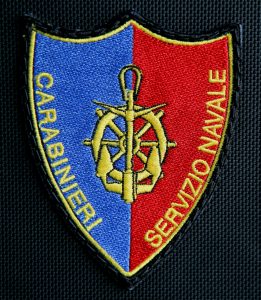
The selection of the Ferretti ship was announced on June 13, 2019, the contract being worth around 16 million Euro. As said the contract includes the delivery of 16 ships, the N802 Walter Frau being in the hybrid version, as well as training sessions for all 16 units. The original scheduling forecasted the delivery of two ships, N801 and N802 within 2020, four ships in 2021, 2022 and 2023, deliveries ending with the last two units in 2024. However the COVID pandemic delayed the FSD plan; 2020 will see the delivery of the N801, which is being unveiled at the Genoa Boat Show.
The initial trials were carried out in the Adriatic Sea, at Fano, then the ship was disassembled in its four main components, hull, deck, superstructure and cabin, which took about one day. It was then transported by truck, and reassembled at La Spezia in a couple of days before reaching Genoa for the show. The training of the first N800 crew will start immediately after the show, the ship being then delivered to the Lampedusa Carabinieri Station, replacing the Class 800 boat in service on that island. The technical launch of the hybrid N802 is scheduled for December 2020 with delivery in early Q1 2021.
Photos courtesy FSD and P. Valpolini


